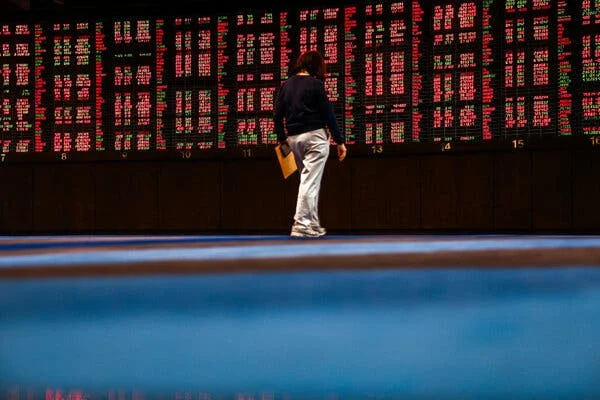
Bond Market Turmoil Sparks Doubts Over America’s Safe-Haven Status Amid Tariff Chaos
In a dramatic week for global finance, the U.S. government bond market—long considered the ultimate refuge for anxious investors—has been shaken to its core amid rising tariffs and volatile economic signals from the White House. The turmoil is raising fundamental questions about the United States’ role as the world’s financial safe haven and highlights just how fragile market confidence has become.

The catalyst for this upheaval stems from President Trump's escalating trade war. After announcing sweeping tariffs against multiple countries last week, on Wednesday he surprised markets by pausing most of those levies for 90 days while simultaneously increasing tariffs on Chinese imports—a whiplash move that left investors scrambling. Initially, U.S. stocks soared, but the fixed income markets sent a far more cautionary signal: yields on benchmark 10-year Treasuries leapt to 4.35 percent, with earlier trading reaching above 4.4 percent—the biggest three-day surge since late 2001. Meanwhile, the 30-year yield spiked above 5 percent before settling near 4.79 percent, highlighting the scale of the sell-off in government debt.
This abrupt rise in yields—meaning falling bond prices—has intensified borrowing costs worldwide, from Britain to emerging markets, potentially choking off economic growth globally. It also mirrors an unsettling reversal in traditional market behavior. In times of stress or recession fears, investors typically flock to U.S. Treasuries, pushing yields down. But as recession talk mounts alongside tariff fears, flows have instead fled American bonds—unsettling a pillar of the financial system.
The stakes extend well beyond Wall Street. U.S. government bonds serve as collateral across the globe and underpin trillions in financing. Their volatility destabilizes other markets, including currencies. Indeed, the dollar itself unexpectedly weakened following Trump's tariff moves—contrary to the usual flight-to-safety dynamic, though it pared back some losses later that day. Meanwhile, alternatives to Treasuries such as German bunds saw yields drop, and gold prices rose, signaling a shift in the search for safety away from the U.S.
Well-known Wall Street strategist Ed Yardeni warned, “The stock and bond vigilantes signal that the Trump administration may be playing with liquid nitro... Something may be about to blow up in the capital markets.” For his part, Trump appeared unconcerned, telling reporters, “The bond market is very tricky. I was watching it. But if you look at it now, it's beautiful.” Yet beneath this bravado, the chaos in bond markets suggests deep investor anxiety over protectionism’s real economic impact.
This confusing reaction—where bonds sell off despite economic uncertainty—raises critical questions. Is the U.S. government undermining investor faith in its own debt by weaponizing trade policy? Or does this reflect global investors starting to hedge against unpredictable American policy after decades of stability? With the 10-year yield now marking its wildest swing since 2001, these concerns are no longer hypothetical.
Ultimately, these shifts may reset how investors perceive risk itself. If the traditional U.S. safe haven is no longer reliable during turmoil, the ripple effects could reshape everything from currency reserves to interest rates worldwide.
Whether Trump’s trade gambit pays off or backfires remains to be seen. But the recent turmoil has already sent a loud warning signal through the heart of global markets. Is this just short-term noise, or the start of a deeper, more destabilizing shift away from American financial dominance? Share your thoughts below.
Related issues news
What is the US treasury basis trade?
The basis trade is a strategy that hedge funds use to wager on the difference between prices of cash Treasuries and futures. Because the gap is often minuscule, investors typically borrow to multiply their bets, up to 50 or 100 times the capital invested.
Who buys government bonds?
Individuals, organizations, fiduciaries, and corporate investors may buy Treasury securities through a bank, broker, or dealer.
What is 10 year yield?
The 10-year Treasury yield is the interest rate on 10-year Treasury bonds, which is the interest rate the U.S. Treasury would have to pay to borrow for a 10-year period. The 10-year rate decreased over the past four decades. It was, for example, 15% in 1981, but averaged only 2% over the period from 2013-2022.
Who sells US bonds?
TreasuryDirect is the official United States government application in which you can buy and keep savings bonds. To buy a savings bond in TreasuryDirect: Go to your TreasuryDirect account. Choose BuyDirect.